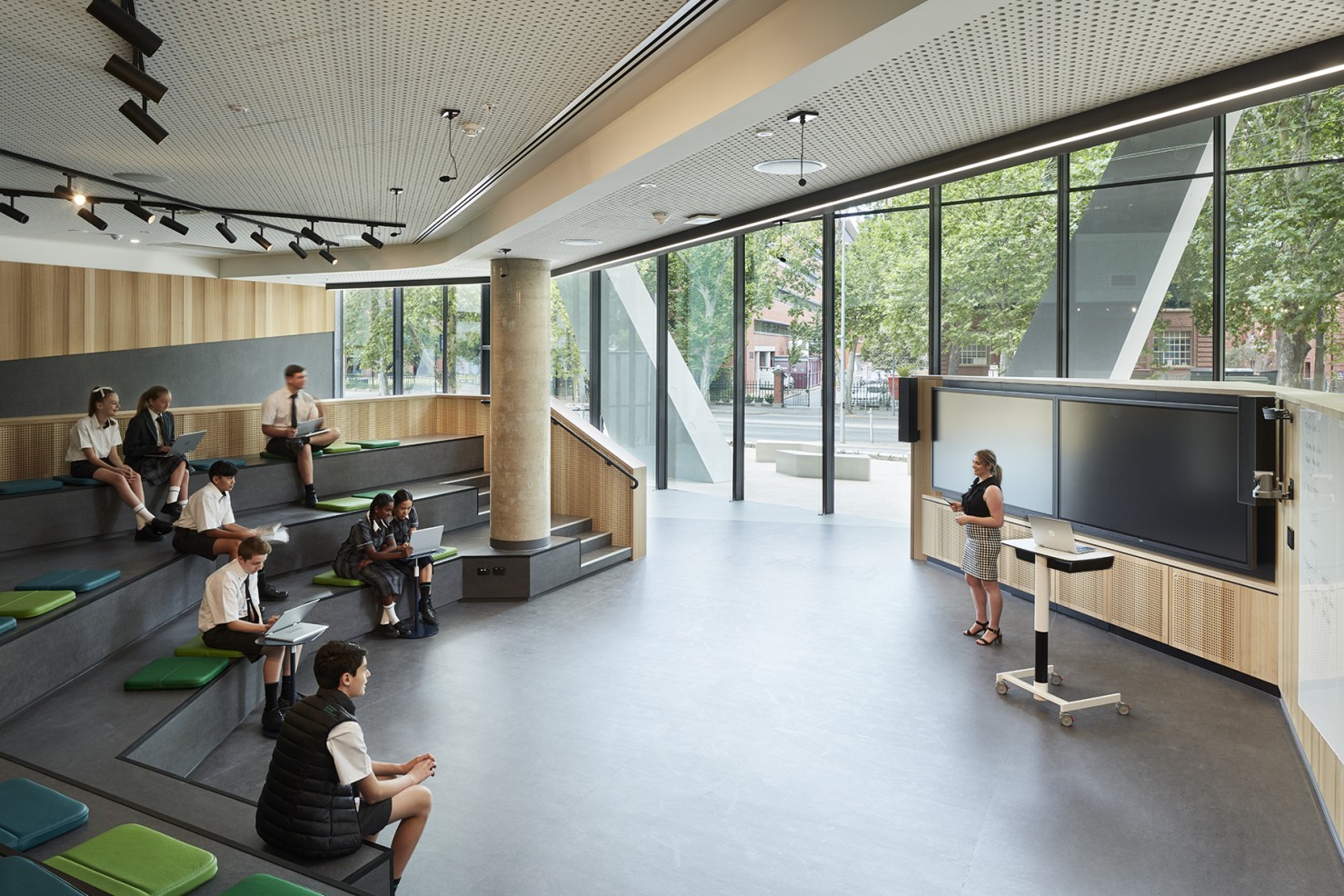
Celebrating 21 Years Together
Born from three Australian architecture and design practices coming together in 2000, DesignInc is a powerful union of design talent, professional expertise, and multidisciplinary skills.

Adelaide Botanic High School has been conceived as a vertical high school with an ‘active’ atrium as the central community heart between the repurposed and new buildings. It creates a multi-disciplinary vertical learning environment that allows a high degree of visual and physical connectivity between floors. The vertical nature of the building offers opportunities for collaboration and connection not available in a traditional school setting.
STEM education has grown in popularity because it offers an effective way in which to develop secondary students’ creativity, critical thinking and collaboration skills. As a pedagogy, the integration of science, technology, engineering and mathematics is paving the way for dynamic student-centred education environments that promote inquiry and project-based learning. The challenge for architects and designers is accommodating different student behaviours across a range of age groups under the same roof.
Our Adelaide studio, in collaboration with Cox Architecture, has managed to do just that with their design of the newly opened Adelaide Botanic High School, the first vertical high school in South Australia. Situated in the CBD on Frome Road, it’s the icing on the cake for an existing civic and education precinct, which includes two universities, embedding the students within a broader learning community and giving them an outward focus.
The project involved the refurbishment of the 1960s Reid Building to accommodate six levels of teaching and learning environments, and the construction of a new seven-storey building. These two structures are linked by a large atrium with an ETFE roof that not only functions as a meeting place and space for individual study but also exemplifies one of the design’s driving concepts.
Visibility and a sense of openness pertinent to the STEM approach is manifest in the interior planning, which eschews the traditional classroom model for a variety of different spaces that are flexible and reconfigurable. Staff areas aren’t segregated from the learning environments either and are interspersed throughout, much like a university. The layout allows for interaction and brings teachers together from every subject, providing a framework for a cross-disciplinary curriculum and heightening the learning experience for some 1250 students from Adelaide’s inner-city suburbs.
This notion of putting learning on display was really important because it encourages collaboration between teachers and students, so we’ve created a lot of visual connections inside the building. And externally too, because we wanted to be able to communicate what was happening inside of the building to the people outside.